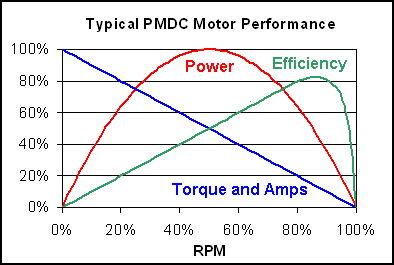I was playing around with some acceleration models and thought this forum might be interested in the results. I created the models based on Car&Driver test data:
2017 Bolt EV - http://media.caranddriver.com/files...-review-car-and-driverchevroletboltev2017.pdf
2017 Volt - http://media.caranddriver.com/files...st-review-car-and-driverchevroletvolt2017.pdf
2014 Spark EV - http://media.caranddriver.com/files/2014-chevrolet-spark-ev2014-chevrolet-spark-ev-mar-2014.pdf
2014 Model S 60 - http://media.caranddriver.com/files...eview-car-and-driver2014-tesla-model-s-60.pdf
2014 i3 - http://media.caranddriver.com/files/2014-bmw-i32014-bmw-i3-comparo.pdf
2011 Volt - http://media.caranddriver.com/files...-volt-complete-specs-and-performance-data.pdf
The results don't perfectly match the C&D data, but it's pretty close and well within the normal variation due to test methods and conditions.
Note 1: The 2015-16 Spark EV's have a 3.87 final drive ratio, vs 3.17 in the 2014 Spark EV's, which would produce different results.
Note 2: The S 60 is the original version with the smaller ~60 kWh battery.
Note 3: The i3 is the BEV with the lighter 60-Ah (22kWh) battery.
There are a few nuances to pull from the charts, but my biggest takeaways are:
1) The Bolt EV will accelerate decently right up to 93 mph. Hitting that speed limiter will be noticeable as the acceleration falls from 0.13g to zero. This jerk is probably atypical, as many cars aren't accelerating as much when they hit their rev-limiter or they are drag limited.
2) The Bolt EV acceleration does appear to be optimized for better highway acceleration, as indicated in interviews with GM personnel.
3) At highway speeds, the Bolt EV will respond almost as well as the old S 60.
4) I'm bummed that C&D never tested the 15-16 Spark EVs, because that's what I drive.
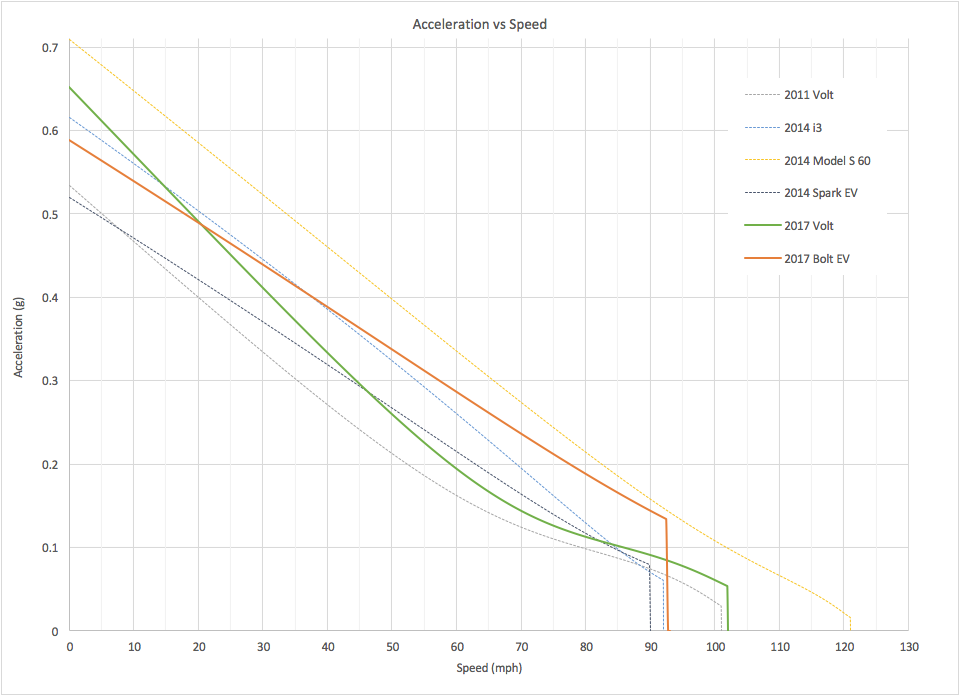
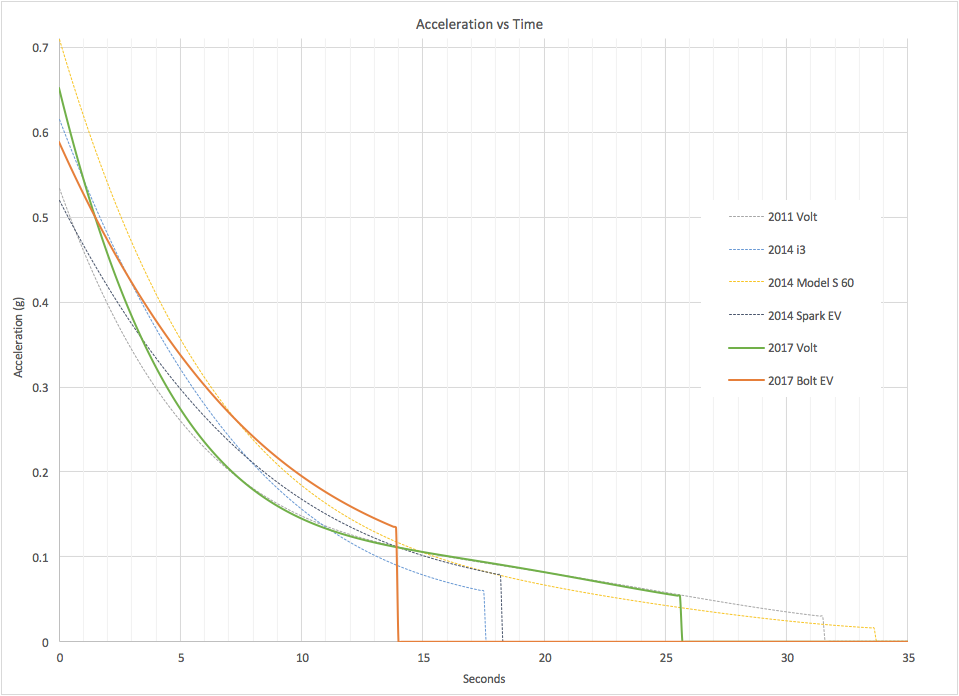
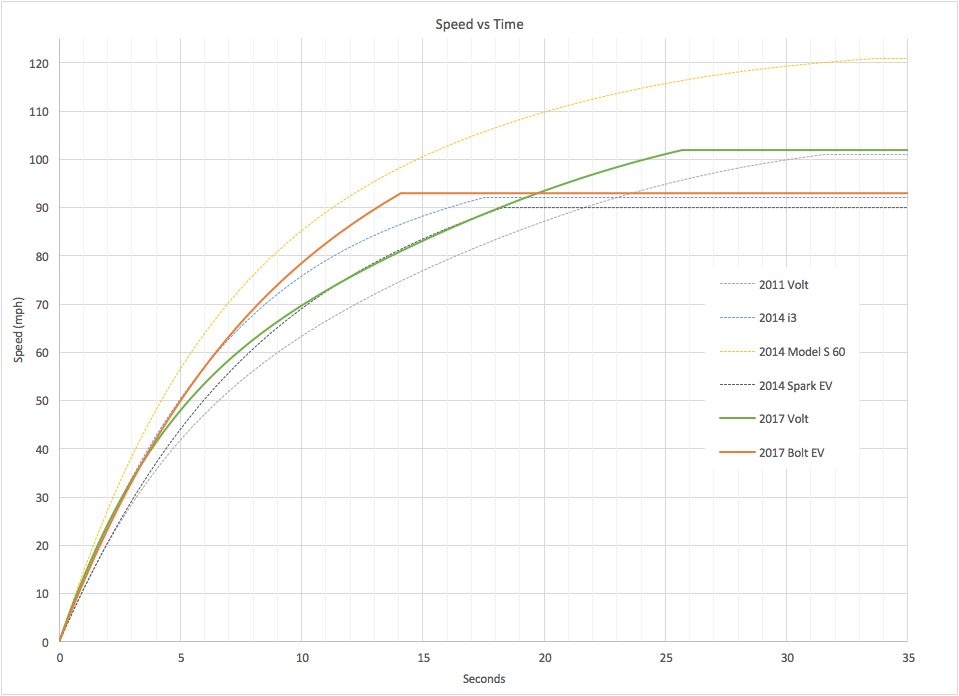
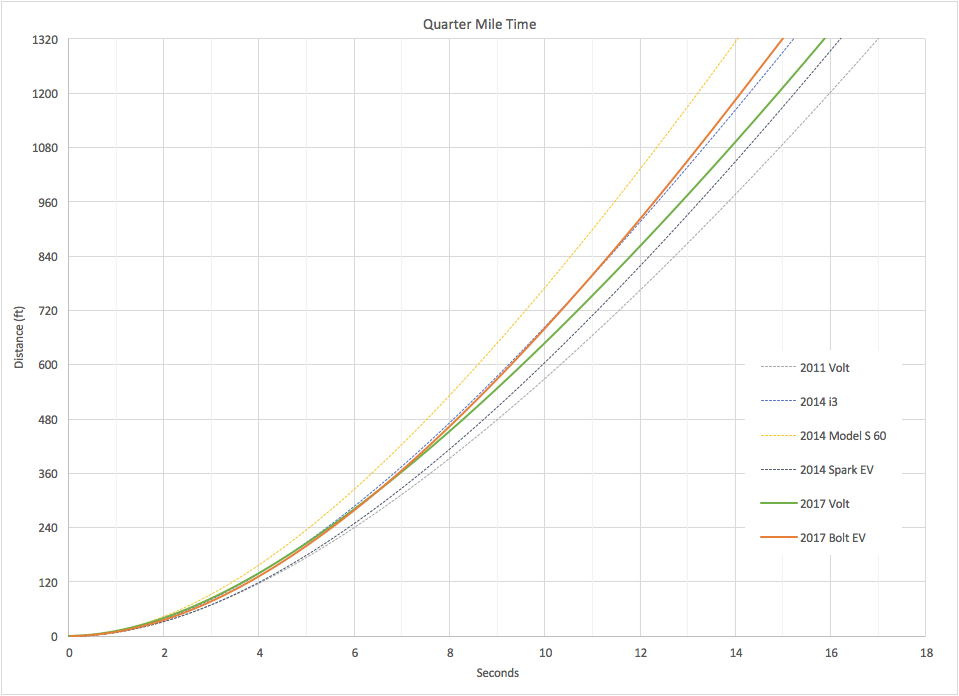
2017 Bolt EV - http://media.caranddriver.com/files...-review-car-and-driverchevroletboltev2017.pdf
2017 Volt - http://media.caranddriver.com/files...st-review-car-and-driverchevroletvolt2017.pdf
2014 Spark EV - http://media.caranddriver.com/files/2014-chevrolet-spark-ev2014-chevrolet-spark-ev-mar-2014.pdf
2014 Model S 60 - http://media.caranddriver.com/files...eview-car-and-driver2014-tesla-model-s-60.pdf
2014 i3 - http://media.caranddriver.com/files/2014-bmw-i32014-bmw-i3-comparo.pdf
2011 Volt - http://media.caranddriver.com/files...-volt-complete-specs-and-performance-data.pdf
The results don't perfectly match the C&D data, but it's pretty close and well within the normal variation due to test methods and conditions.
Note 1: The 2015-16 Spark EV's have a 3.87 final drive ratio, vs 3.17 in the 2014 Spark EV's, which would produce different results.
Note 2: The S 60 is the original version with the smaller ~60 kWh battery.
Note 3: The i3 is the BEV with the lighter 60-Ah (22kWh) battery.
There are a few nuances to pull from the charts, but my biggest takeaways are:
1) The Bolt EV will accelerate decently right up to 93 mph. Hitting that speed limiter will be noticeable as the acceleration falls from 0.13g to zero. This jerk is probably atypical, as many cars aren't accelerating as much when they hit their rev-limiter or they are drag limited.
2) The Bolt EV acceleration does appear to be optimized for better highway acceleration, as indicated in interviews with GM personnel.
3) At highway speeds, the Bolt EV will respond almost as well as the old S 60.
4) I'm bummed that C&D never tested the 15-16 Spark EVs, because that's what I drive.





